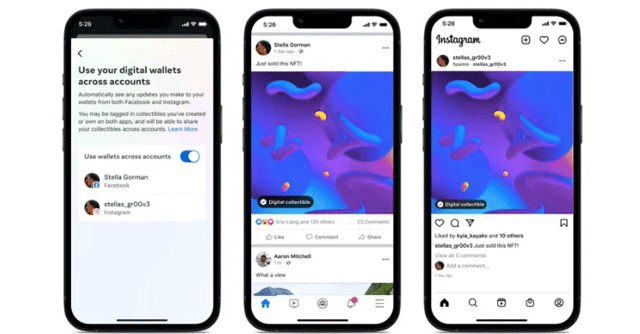
Meta rolls out NFT posts on Facebook, Instagram amid sharp drop in interest


Meta Platforms is offering a wider rollout of its compatibility with non-fungible tokens (NFTs) and web3 wallets. After having announced the feature in May, when Meta said that users would get the ability to link their NFT wallets and showcase their digital art purchases and sales, the service now appears to have become available to a wider set of individuals — albeit still at a beta rollout stage.
With this feature, users who are selected for the beta will get a prompt asking them to link their NFT wallets to their Meta accounts. Doing so will link their wallets to both Facebook and Instagram, and users will be able to post their NFTs on either media subsequently.
The feature comes months after a phase of hype around NFTs, which are pieces of digital artwork in various formats that have a unique underlying crypto token that acts as a digital signature for it — thereby making it unique.

While the initial phase of hype saw adoption of various NFT projects from digital artists, the demand for these digital arts has since dropped. According to NFT market tracker NonFungible, the daily NFT trading volume and total traded value per day of NFTs fell from close to 5 million NFTs and over $4.8 billion in NFT trades per day — to as low as 11,000 NFTs traded at just over $5 million on Tuesday, August 30.
Other market trackers also corroborate such a decline — according to web3 market analysis and tracker DappRadar, OpenSea, the world’s largest NFT marketplace, has seen its trading volumes decline by over 99% since the peak volumes that it scaled earlier this year.
Meta has also published a guide on how to keep your digital art purchases safe. The rationale for this is that promoting your NFT belongings on social media could attract phishing and other scammers. However, the safety details offered by Meta on its Facebook and Instagram help pages has nothing specifically to do with NFTs — instead urging individuals to enable two-factor authentications and set strong passwords.

